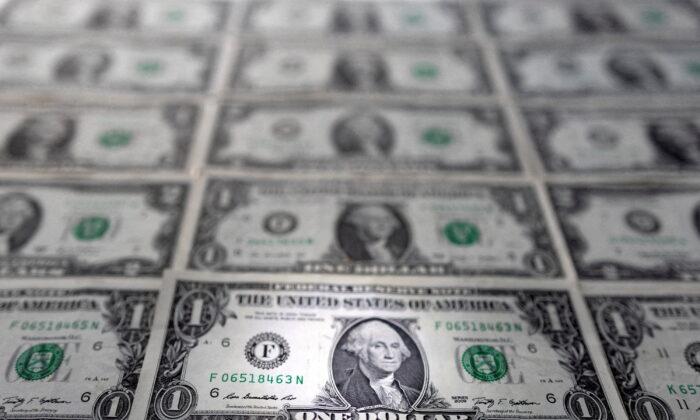Commentary
Americans are facing 40-year high inflation, and there’s been no shortage of discussion on the topic. It’s
the No. 1 issue on the minds of Americans heading into the midterms, and every day on TV and in newspapers, pundits are debating how long it will last and deciding who is to blame.
What’s most astonishing amid the flurry of news is just how badly the commentary misses. While there is broad agreement that the United States is experiencing dangerously high inflation, partisanship and ideology have polluted basic economics.
Progressive politicians such as Sen. Elizabeth Warren (D-Mass.) tweet
incessantly that “corporate greed” is to blame, an idea even Democratic economists have
summarily dismissed. President Joe Biden, meanwhile, has
blamed Vladimir Putin. Republicans, on the other hand, have consistently made the case that Biden is the inflation culprit.
All of these explanations are entirely or mostly wrong.
While it’s true that Putin and Biden deserve some blame—particularly in terms of high energy prices—there seems to be an unspoken bipartisan consensus to ignore the elephant in the room: the Federal Reserve’s unprecedented money printing.
One person not playing the game is Kevin O’Leary, the Canadian entrepreneur and investor who regularly appears on ABC’s “
Shark Tank.”
While speaking to journalist Daniela Cambone, O’Leary bluntly explained why Americans are experiencing the highest inflation in generations.
“The printing presses have gone insane,” O’Leary said. “That’s why we have inflation in the first place.”
By printing presses, O’Leary is talking about the Fed. The central bank has been expanding the supply of money for decades, and the clip has picked up in recent years. Nothing, however, has compared to the monetary expansion that occurred during the pandemic, something Fed Chairman Jerome Powell last year acknowledged in a “60 Minutes” interview with Scott Pelley.
“Yes, we did,” Powell responded.
This is what O’Leary is getting at. “Flooding the system with money” is what drove inflation to historic highs, and the result was always an obvious one.
“For all the talk of inflation, you print $6.72 trillion in 30 months, what ... did you think was going to happen?” O’Leary said. “Of course, there’s going to be inflation.”
O’Leary’s figures are not wrong.
Fed data show that in August 2019 there was $14.9 trillion total in circulation. By January 2022, there was $21.6 trillion.
In other words, more than 30 percent of dollars in circulation in January 2022 had been
created in the previous 30 months.
What Is Inflation?
Money creation is the obvious driver of price inflation, a concept that most Americans have at least a vague understanding of because we see it all around us today. Prices are up for almost everything, and up a lot.
But are higher prices alone evidence of inflation? Prices are always changing, after all. Sometimes they go up and sometimes they fall; oftentimes it has nothing to do with money printing but is simply a reflection of changes in supply and demand.
This is what makes inflation challenging to define, and in fact, there are two definitions for it.
For centuries, inflation was defined essentially as an increase in the money supply. Basic economics holds that if you expand the money supply without expanding goods and services, prices will rise. So that was the definition of inflation: an increase in the supply of money.
Economists in the 20th century added a second definition, however, calling inflation “a general and sustained increase in prices.” We can see from this definition that what separates inflation from simple price increases is that they are broad and sustained.
“Inflation is an increase in the quantity of money and credit. Its chief consequence is soaring prices,” Hazlitt
explained. “Therefore, inflation—if we misuse the term to mean the rising prices themselves—is caused solely by printing more money. For this, the government’s monetary policies are entirely responsible.”
Hazlitt argues that rising prices are the consequence of inflation, which is an increase in the money supply. This is why some economists don’t like the new definition of inflation.
It isn’t difficult to see why some economists see the traditional definition of inflation as superior. It gets right to the cause of price increases (an expansion of the money supply), while the new definition focuses on a symptom of inflation (“a general and sustained increase in prices”).
This second definition is far less clear, which might be precisely why some people like it.
Nobody wants to be blamed for inflation, after all, and under the first definition, blame will always return to one spot: the people who control the money supply, and to a lesser extent the politicians, big banks, and bureaucrats who support the Fed and directly benefit from its largesse.
That’s a lot of pressure for central bankers and politicians. It’s far easier to say Putin is primarily responsible for high prices, or the “greedy corporations,” or Biden’s Build Back Better policies.
But don’t be fooled: The primary cause of inflation is the printing presses, exactly like O’Leary says.
Views expressed in this article are opinions of the author and do not necessarily reflect the views of The Epoch Times.





